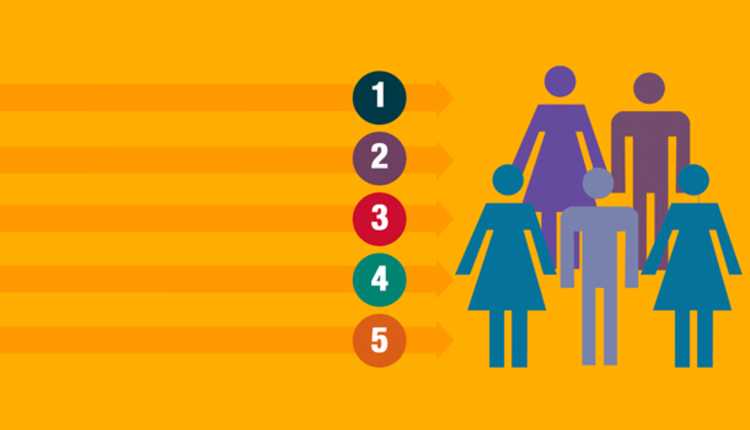Knowledge is available at the click of the button. Yet there is a gap between the sip and the cup which only a guru, a teacher, our parents, or a mentor can help us bridge. Technology, However advance, will fail to answer our questions after a point. People offer scope to look for the right source that answers us. This source could be the experiences, interactions, and exchanges that happen between people. This leads to discoveries and inventions which once were only imagined are today our luxuries, our necessity, or alternatives.
It has been realized that the attention span of any individual is highly distracted by opportunities and alternatives around. Thus it is a challenge to make someone listen to us with focus attention. And when it comes to students, the challenge is even bigger. The challenge of teachers is about seeking attention but more important is sustaining interest. Teachers cannot only focus on information and knowledge but have to focus on the ‘How to impart them’. So is it scary enough for teachers to expect students to lose interest during online teaching? It could be if teachers do not act promptly and work on it. Also, read 10 Software and apps to conduct and host live classes in India for free.
Psychologists and Educators with great experience have time and again provided a lot of skill sets that have helped teachers to improve upon their teaching skills. However, the list is huge and sometimes difficult to apply. Let us thus begin with the 10 primary mantras that will help us while preparing for this challenge. These 10 primary mantras are best applicable during and after COVID-19 when the world is shifting towards the New Normal.
Let us identify what is our focus and what is our goal to be effective in teaching through online platforms. If only our goal is very clear and has tangible aspects, it will then help us prepare our focus to walk the path and achieve our goal. The final goal can be divided into multiple small goals. Each small goal achieved acts as validation, encouragement, and assurance that ultimately build our confidence. But if it results in moving us away from our ultimate goal, then let us pause and relook at the execution of that small goal. If the execution seems right then the set small goal has to be redefined and achieved to help us move ahead.
The 10 primary mantras we need to work upon while preparing for online teaching are:
1. Embrace the changed situation

Embrace the changed situation by spelling it loud enough helps us accept the situation. Any change always is either desired or is unexpected. Change is driven by the situation and, by the behaviour of people around us. If others are the reason for the change, it always is a shock or set-back for us and set-backs need to be absorbed before we think over our future actions. This pause allows us to see the change objectively.
So teachers need to accept the situation, realise that our approach will change and evolve to embrace change.
2. Have a relook in the past

Have a relook in the past, what has been learnt, and what our approach was earlier. It is important even before begin to move from the current practices.
People evolve with time. What was impacting before could today be well accepted, for time has allowed us to understand and add on to experiences.
As teachers, we need to relook at what and how we have been preparing to teach our students. Identify the areas that were effective and we are confident will still make an impact on students for better understanding. List them under – Ideas, Applications, Outcome, and Impact.
Ideas mean the topics, the concepts we wish to teach. Applications are the methodology and tools we use. The outcome is what we expect students to learn once they understand. For, ex. For a concept of mathematics, the outcome is, students able to apply the formula and connect it to the field of work or life it relates. Finally, impact, most important for it’s the students’ response. Every class and every student responds differently. Noting the positive responses will act as an indication of a positive class.
3. Bridge the gap with a warm and bright smile

No person can ever resist responding to a smile, it is infectious. Every individual looks for joy and that is the ultimate desire. A warm and bright smile turns into a pleasant memory that gets stored in our brain and cheers us anytime we recollect it, thereby helping us remember the context which could also be a lesson learned in the class. A smile builds patience, necessary to achieve something in life.
As teachers, if we ever look back, a clear instruction, “Keep Quiet Class” was enough for us to grab the attention of our students for the next 10 minutes. But although being online we are closer, the distance between the teacher and the student is huge. Watching a warm and bright teacher, on the other side, brightens the students. It helps them to focus and concentrate for some time. To sustain our smile during the session is only possible with practice.
4. Take into account the third

The party that is watching us and expecting from us. Every person we are connected transfers the equation in the form of opinions to others. Thus, any wrongdoing by the child is always, instinctively connected to the grooming from parents, while it could be any other external influence. Also at times, when I am not good at anything, people assume us not to be good at similar things These are those people who are remotely connected or have been a part of that particular situation.
This is exactly what teachers will experience. Today parents are educated and highly aware. They are also concerned about their ward and would always expect the best, even if their ward is interested or not. For that matter, they would be always expecting a high level of commitment and dedication from school and the teachers. Earlier, there were a few occasions that would allow them to share their opinions or suggestions. Parents have demanded to attend an ongoing class only to observe her teaching skills. Though this was impractical before, with online class, this is possible and one cannot stop it.
This can only be addressed by accepting third party observation and being true to your work through the right and focused preparation.
5. Reinvent the old and package it in a new way

If only we had been happy with typewriters, scientists would not have reinvented themselves to invent advanced mobile phones and computers. Since we were educated to think, we have evolved to be civilized and inclusive individuals. Only because we learned history, could we avoid repeating mistakes and progress.
Likewise, as teachers, the ‘Relook’ will help us to recreate refined and relevant teaching tools from our old practices. The impact that we created during offline classes, could be our reference points to reinvent our teaching techniques.
Online teaching primarily demands regular engagement along with learning. This is possible if we know the impact that gets the desired outcome. We need to have the same impact, the same ideas, but the application needs to be reinvented, ultimately getting the desired outcome. The reinventing success meter is based on the impact and then the outcome which is missed most of the time. The reinvented application should definitely be tech-friendly and action-oriented.
6. Point the key takeaways for the day

Every day we have many experiences, but not all make an impact. Only those that connect to our emotions, to the people we are connected to, or bring positive change remain with us for life. Just like a menu card, which has so many dishes to offer, dishes that seem familiar, builds an appetite and seems safe are ordered. It is the ingredients, the vegetables, or the flavour that are the reasons for our decisions.
Similarly, every topic is vast with multiple aspects. The class full of bright and average students learn differently. As teachers, we need to help to reach the baseline that allows them to learn and score. Bright students will try and grasp as much possible and also explore further on their own. Thus while preparing, teachers should identify 7-10 takeaways of the day, incorporate them to design the lesson plan accordingly. These takeaways would be the outcome that we should achieve. It assures that average students feel comfortable with the subject, achieved baseline level, and prepare them for the next class, where they are more attentive and in the learning mode.
7. Take a small break in between for rejuvenating and connecting

Every conversation that takes place if it does not include some light deviations in between would lead to a disconnect. It allows the speaker to gage if the listener is with the speaker. It also allows understanding the response and concentration, on the subject, of the listener. If there was concentration, it means the message has been received rightly.
Teachers in their class session plan, of 45 minutes duration, should have a maximum of 2 small breaks of not more than 3 minutes. These breaks would differ depending on the age group. Students from grade 5 to grade 12 should ideally be not allowed to zoom out of the online class, move from their place but encourage them to do something together. It could be simply making faces, some eye exercises to ease the stress because of the screen, or share a joke or ask a student to sing a song. Such breaks should be taken after 15-20 minutes of a focused session.
8. Set the ground rules for the day

Every new space, new interaction, and new people if providing the right information on what is expected helps positively in the exploration of the association. It helps in achieving the goal that ultimately all expect and look for.
It is important, for teachers, to realize that the medium is new. Grooming, to be able to behave appropriately, will take time. So 3-5 minutes at the beginning of the class should be dedicated to sharing the ground rules. It includes basic online etiquette and discipline. It also communicates to parents the third party, the seriousness and the professional approach of the teacher, the discipline that is expected and being inculcated in the students. The ground rules also should include the session structure that actually helps in making the audience, the students to be in the know. It will also reveal the break times but keep the activities in suspense to build interest.
9. Collaboration is Power

Sharing and allows innovations, thus creating some ease. If a group is able to share responsibilities, it allows everyone involved to concentrate better and thus give good results. Collectively executing reduces stress for everyone and working is faster and most importantly enjoyable.
Teachers need to collaborate with students making online teaching effective. It could be simply asking some students, at the beginning, to share their views on the lesson, read before. Students prepare questions from what has been taught and quiz their classmates at the end of the session. Students could also prepare visuals related to the subject and showcase along with explanations.
10. Showcase the professional in You

Every profession has their expectations and limitations. If performed rightly, will help earn respect, and seek an expected and appropriate response.
The teaching profession is highly revered and maintaining its value is in our hands. Hence, we need to dress formally for the class to earn respect and build connections within the community. It is also important to have a dedicated space with an appropriate backdrop. Ideally, a plain background with well-defined spaces would reflect better. Since our approach of conducting the online class is going to be informal, dressing formally will help maintain decorum and build sanctity. It is an image-building exercise too.
Effectiveness is displayed through the right responses. These 10 primary mantras will get us the right responses and build the foundation to be effective in online teaching. It will help us be part of the new normal and enhance our capacity and calibre as effective teachers, today and tomorrow.


